Boxwood shrubs are some of the most versatile types of vegetation in all of the plant kingdom. They are evergreen shrubs that maintain their green foliage all year round. These shrubs can serve various purposes in both the form and the function of your lawn’s landscape.
If you like this article, then you’ll want to make sure also to check out our guide on how to successfully grow boxwood on your property.
Boxwoods come in a variety of shapes, sizes, and densities. In fact, there are around 90 different species and over 365 different varieties. Because of all the different varieties, you can do almost anything in your yard with these shrubs.
Because boxwood plants take well to shaping and shearing, they are ideal for defining areas around your home. You can create a privacy hedge along the property line that is also resistant to interference from wildlife.
The great thing about them is that they bring about a certain sophistication without competing with the surrounding vegetation.
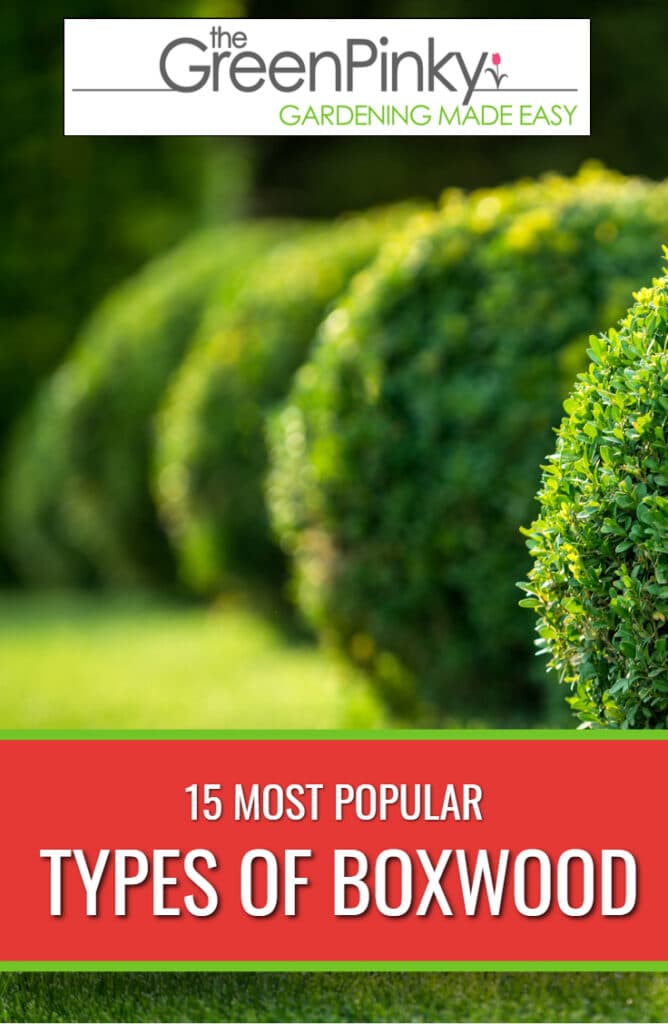
There are a plethora of different varieties of these unique and versatile plants. The genus is divided into 5 major subcategories. Keep reading below to find details of each of these subcategories.
Before you rush out to buy them and start planting your boxwood in the ground, check out the descriptions that follow here to ensure you are picking the right plant for the job.
With so many varieties and types at your disposal, you will find one that suits your property.
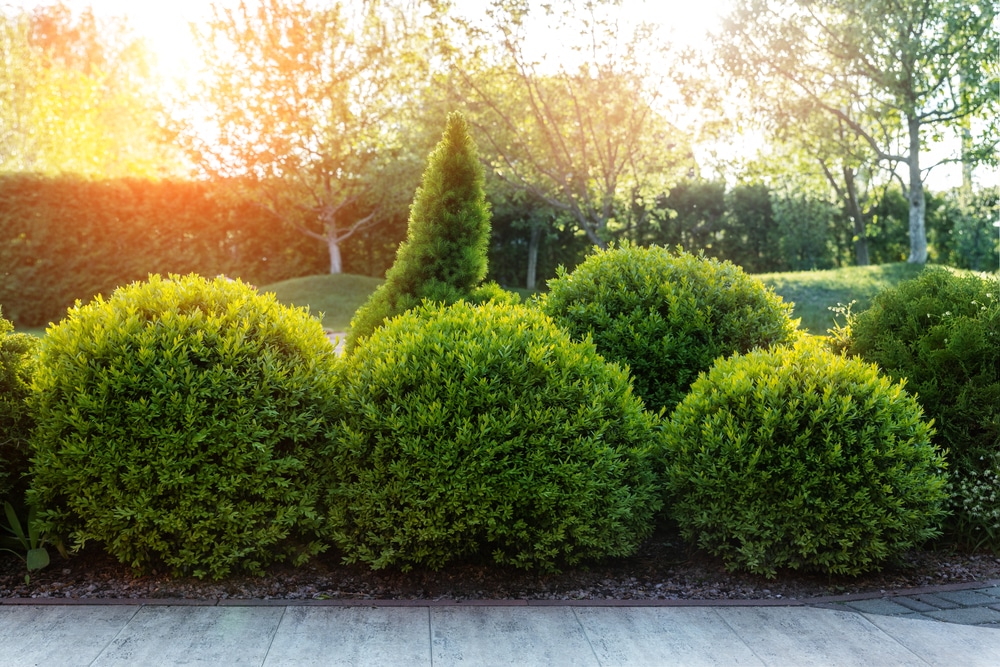
Small Leaved Cultivars (Buxus microphylla)
The supple foliage and compact sizing of small-leaved boxwood are perfect for smaller gardens or containers. Their evergreen leaves have a glossed over appearance that make them very well suited to being paired with plants with bolder colors.
Classically, small-leaved buxus are used as focal points in landscapes. Imagine a feature point in a garden or a trimmed hedge. They are also great for being planted along walls and fences.
The leaves of these varieties can vary across the spectrum of green.
Some of these varieties are very well suited to being grown in the United States’ colder growing zones. Here are three popular types of Buxus microphylla:
Grace Hendrick Phillips
This popular variety will grow slowly around your property and is ideal for a low hedge, edging, or as a focal specimen. When cared for properly, this variety is resistant to fungal disease as well as pests. It requires little to no pruning, except when using it in a hedge or a parterre.
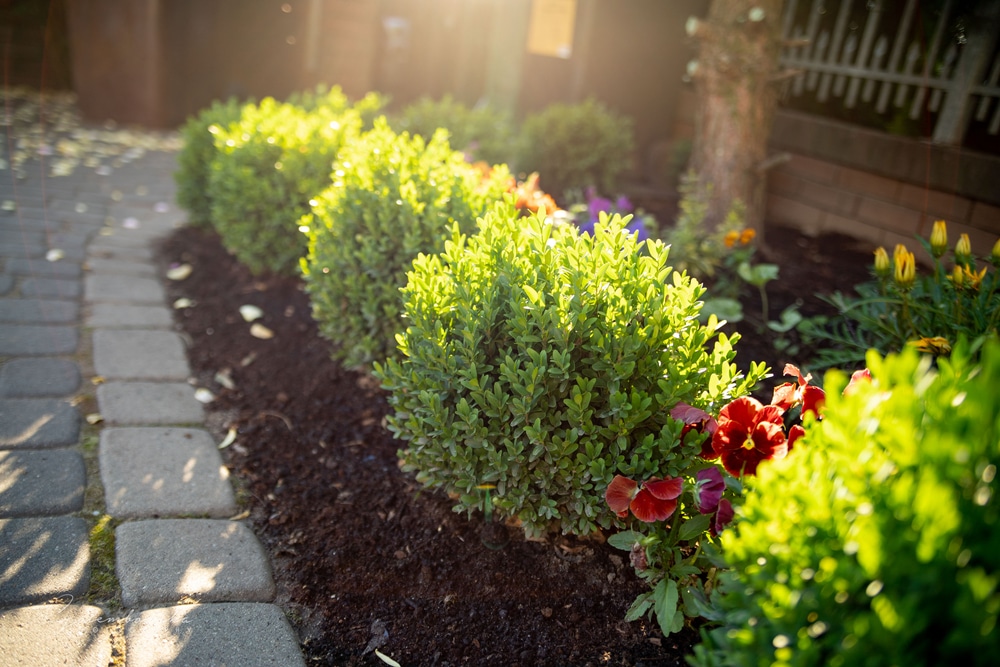
Specifications:
- Height: 1 Foot
- Breadth: 2 Feet
- Hardiness Zones: 6, 7, 8
- Exposure: Partial Sun, Shade
- Color: Green
Compacta
This particular variety is also known as the Kingsville Dwarf. It is one of the most sought after varieties. The compacta makes a beautiful statement in a small garden or as a row of small border plants. This variety is very slow-growing, adding only about ½” of growth each year.
Interestingly, this particular variety is so popular because it is often used as a bonsai plant. It features dark green, tiny leathery leaves, a dense growth habit, and rough bark. This combination makes it the perfect specimen for a bonsai project.
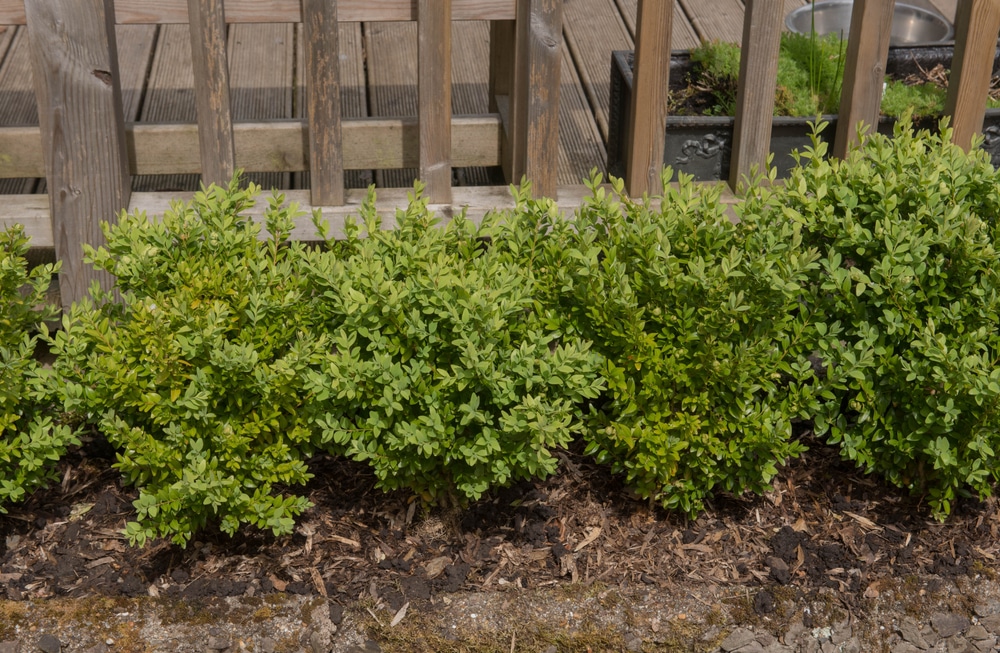
Specifications:
- Height: 1 Foot
- Breadth: 2 Feet
- Hardiness Zones: 6, 7, 8, 9
- Exposure: Full Sun, Partial Sun, Shade
- Color: Dark Green
Faulkner
This dense and compact boxwood with small blue-green foliage is tough, hardy, and easy to grow. In addition to being robust and colorful year-round, the Faulkner will give form, texture, and contrast to your garden. This variety is slow-growing and is best suited to topiaries that include orb and cone formations.
The Faulkner is very versatile and can be used in beds, borders, containers, and both formal and Mediterranean gardens.
It is drought-tolerant and, if possible, should be sheltered as best as possible from strong winds. While it will grow in both full sunlight and shade, it will not be as vigorous and healthy as it will if it is grown in partial sunlight.

Specifications:
- Height: 4 Feet
- Breadth: 3 Feet
- Hardiness Zones: 6, 7, 8, 9
- Exposure: Full Sun, Partial Sun, Shade
- Color: Blue Green
Japanese Cultivars (Buxus microphylla var. Japonica)
These are broadleaf, evergreen boxwoods that will pique interest in your garden during all four seasons. The Japanese buxus are popular because they are easily maintained and they remain green the entire year.
The varieties that fall under this category are great for small topiary, hedges, foundations, and formal plantings. Because of how they grow together, they provide an excellent border to your property line or as low to medium privacy hedges.
Japanese boxwood are moderately drought tolerant once they are established and are relatively low maintenance. Although nothing is deer-proof, these varieties are considered to be deer resistant.
Some design ideas to consider are surrounding a tree, a container on a patio or porch, low hedgerows lining a driveway, and a border to a walkway.
Green Beauty
The Buxus microphylla var. Japonica ‘Green Beauty’ is a medium-sized cultivar with a deep green, glossy foliage that undergoes minimal winter bronzing. With a naturally rounded habit, it is typically slightly wider than it is tall.
The Green Beauty is a strong Japanese boxwood that can withstand the weight from moderate to heavy snowfall without sustaining significant breakage of the limbs. Its disease durability and resistance are excellent as well.
Some design ideas for the Green Beauty shrubs are as medium hedges, in containers, as a medium specimen, or as foundation plants in your lawn or garden.
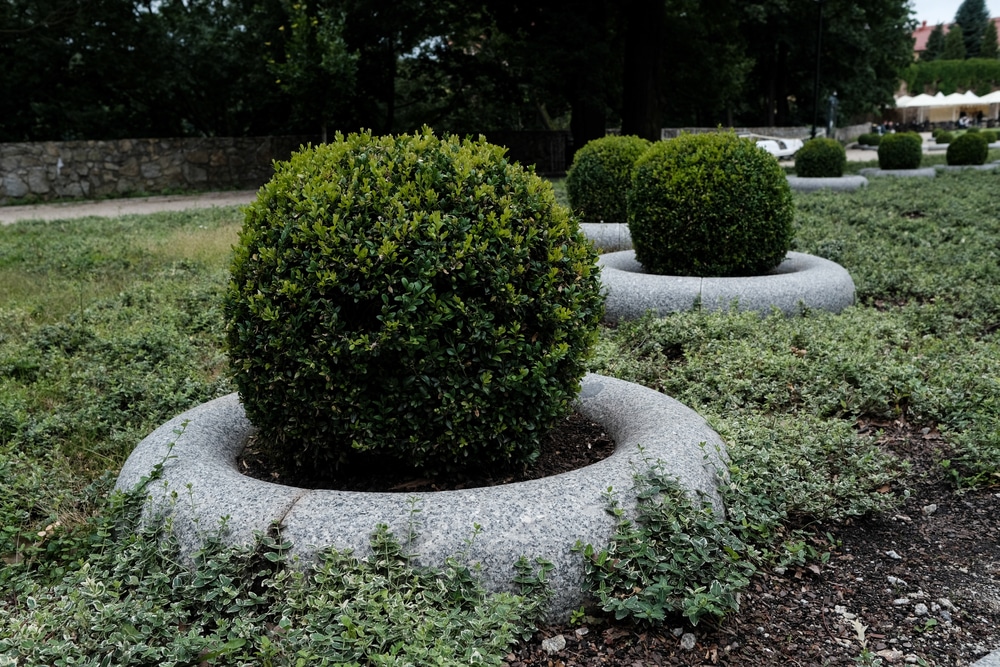
Specifications:
- Height: 4 Feet
- Breadth: 4 Feet
- Hardiness Zones: 5, 6, 7, 8
- Exposure: Full Sun, Partial Sun
- Color: Dark Green
Wintergreen
Wintergreen is a vigorous, winter-hardy variety (one of the few boxwood varieties that will grow in Zone 4) that is perfect when you need to plant a medium-to-large foundation plant. Because the Wintergreen is very tolerant of shearing, you can also shape this cultivar into a medium hedge without much problem.
The size and growth rate makes the Wintergreen an excellent choice for filling a space relatively quickly.
New leaves on these shrubs initially appear as a lighter green and will turn to a deeper green as the plant establishes itself.
While this particular variety can be used as an individual specimen plant, it is best suited in small gardens when planted in groupings. Because of their upright habit, these boxwoods will prune and shape very well, but at the same time, they are relatively low-maintenance.
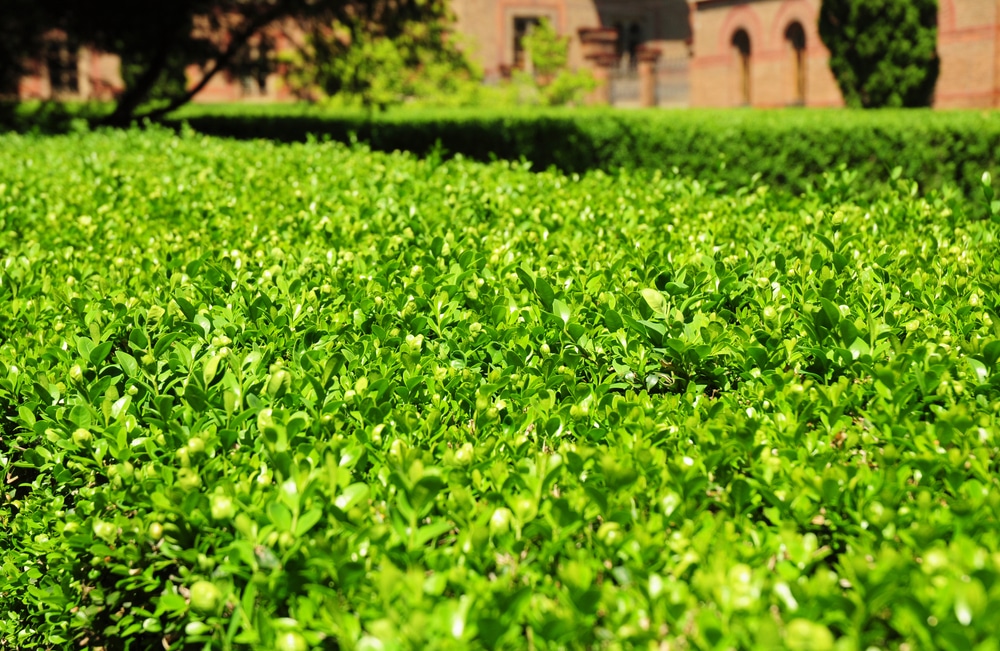
Specifications:
- Height: 4 Feet
- Breadth: 5 Feet
- Hardiness Zones: 4, 5, 6, 7, 8, 9
- Exposure: Full Sun, Partial Sun
- Color: Green
Morris Dwarf
The Morris Dwarf is a wonderful dwarf shrub that comes in a neat and compact package with the added benefit of having dense and thick evergreen foliage. It’s ideal for use as an accent piece of a rock or formal garden, as edging along a pathway, or as a low growing hedgerow.
The Morris Dwarf is prized for its rich and dense green foliage. It works very well in Asian, contemporary, or Mediterranean style gardens.
It is a very low maintenance variety – it can be pruned or left unpruned. Furthermore, it is also deer-resistant.
The Morris Dwarf is very resistant to leafminer, but is susceptible to blight. To minimize the risk of this, you can thin the plant in late winter or early spring.
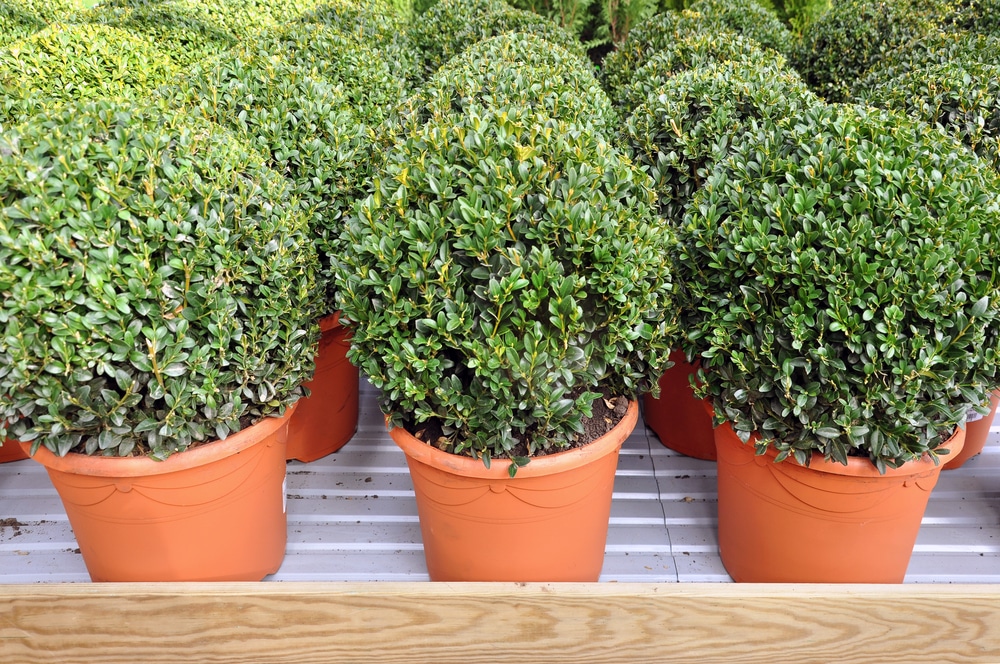
Specifications:
- Height: 1 Foot
- Breadth: 1 Foot
- Hardiness Zones: 6, 7, 8
- Exposure: Partial Sun, Shade
- Color: Light Green
Korean Cultivars (Buxus sinica var. insularis)
Korean boxwood (formerly known as Buxus microphylla var. Koreana) are very popular because they are cold-hardy plants. The many branches of these dense and thick plants are covered with finely textured evergreen leaves that make them appealing all year round.
They are are green during the summer, and in the winter, begin to take on a bronze cast. The spring brings fragrant, cream-colored blossoms that are lovely but will attract bees.
The Korean cultivars have been used for nearly all imaginable landscape ideas. Their size, shape, and ability to handle pruning make them best suited for foundations, edging a pathway or driveway, formal gardens, or as low hedges.
Nana
Nana is marked by its low spread and lime-green leaves that form in the spring. Growth will eventually turn to a lighter green once the shrub is established.
Although it is a smaller Korean cultivar, its growth rate is relatively quick compared to other boxwood within this subtype.
Nana is becoming increasingly popular due to its tolerance of blight and its resistance to leafminer.
Nana are best used in small specimens, low hedges, foundation plants, or in edging a fence line or pathway,

Specifications:
- Height: 2 Feet
- Breadth: 3 Feet
- Hardiness Zones: 6, 7, 8
- Exposure: Partial Sun, Shade
- Color: Light Green
Justin Brouwers
This cultivar is small, compact, and rounded. Justin Brouwers offers a deep shade of green that will catch the eyes of your guests throughout the year. This variety is exceptionally versatile as it can thrive with or without pruning of its branches.
The Justin Brouwers is best used as a small specimen, in containers, as low hedges, edging, and parterres.

Specifications:
- Height: 2 Feet
- Breadth: 2 Feet
- Hardiness Zones: 6, 7, 8
- Exposure: Full Sun, Partial Sun, Shade
- Color: Dark Green
Franklin’s Gem
Franklin’s Gem is a low spreading shrub that will initially arrive with lime green leaves at the beginning of spring. The growth then transitions to an olive green hue shortly thereafter.
It is becoming more popular because of its resistance to leafminers and its tolerance of blight.
The Franklin’s Gem is generally used in the edging of sidewalks and pathways, as a low hedge around formal gardens and small foundation plants.

Specifications:
- Height: 2 Feet
- Breadth: 3 Feet
- Hardiness Zones: 5, 6, 7, 8
- Exposure: Partial Sun, Shade
- Color: Olive Green
Common Cultivars (Buxus sempervirens)
Common boxwood varieties (Buxus sempervirens) are the perfect all-around group of plants that can thrive for up to 100 years or more. If common cultivars are not cared for properly, they can grow very large and unruly.
These shrubs grow faster than their slow-growing dwarf counterparts.
The varieties can grow in anything, from full sun to full shade, depending on the specific cultivar you choose. These shrubs are very drought-tolerant once they are established in the ground.
It is very versatile in its use. It can be grown into a very effective privacy hedge, grown in containers, or sculpted into the centerpiece of your garden.
American Cultivar
This American boxwood is a classic-looking, round, upright, and large shrub that is very versatile in its functions in and around your property. They maintain a dark green color throughout the year and their cuttings are a popular choice for holiday decorations.
Being a larger variety, it is an excellent choice for establishing tall privacy borders or hedgerows. The beauty of its foliage can also act as a centerpiece in your garden.
The American cultivar grows well in zones 5-8 and is somewhat disease resistant to both leafminers and blight.
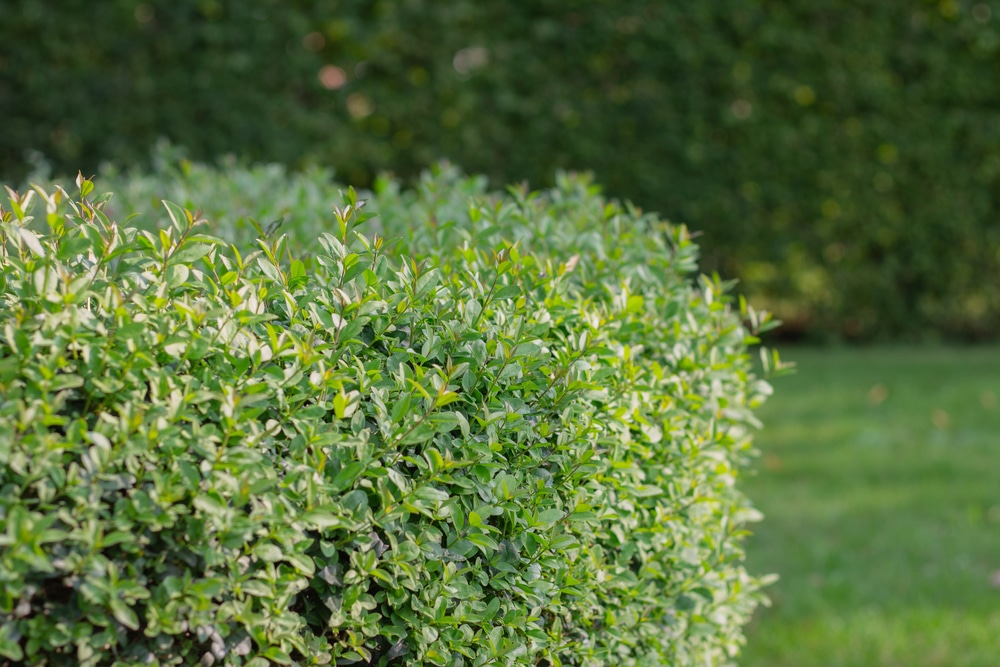
Specifications:
- Height: 4 Feet
- Breadth: 4 Feet
- Hardiness Zones: 5, 6, 7, 8
- Exposure: Full Sun, Partial Sun
- Color: Dark Green
English Cultivar
The dwarf English boxwood (Buxus sempervirens suffruticosa) and the variegated English boxwood (Buxus sempervirens variegata) are two different cultivars of the English variety.
The sempervirens suffruticosa is an evergreen shrub that is small and rounded in shape. This English variety is slow-growing and is ideal for edging around pathways or flower beds as well as in containers or as topiary features.
English boxwoods such as the sempervirens variegata have small dark-green leaves bordered by creamy white or yellow variegation. It perfect for piquing interest by adding color to the year-round landscape.

Specifications:
Suffruticosa
- Height: 2 Feet
- Breadth: 2 Feet
- Hardiness Zones: 5, 6, 7, 8
- Exposure: Full Sun, Partial Sun
- Color: Light Green
Variegata
- Height: 8 Feet
- Breadth: 8 Feet
- Hardiness Zones: 5, 6, 7, 8, 9
- Exposure: Full Sun, Partial Sun
- Color: Variegated
Dee Runk
Dee Runk are different from many other cultivars because it tends to grow in an upright, columnar fashion. Its leaves’ fine texture set it apart from other plants whose foliage is not as well pronounced.
A relatively low maintenance shrub, its upright growth makes it one of the prettiest and most versatile boxwoods on the market. This fast-growing variety is well suited for privacy hedges and for use in holiday foliage decorations. When landscaping, you may consider this somewhat disease-resistant variety to accent a corner or an entryway.

Specifications:
- Height: 8 Feet
- Breadth: 2 Feet
- Hardiness Zones: 6, 7, 8
- Exposure: Full Sun, Partial Sun, Shade
- Color: Green
Hybrid Cultivars
Hybrids are shrubs with complex and extended lineages. Boxwoods, in general, are excellent, low-growing, evergreen shrubs that offer the homeowner any number of varieties for an even greater number of design concepts.
The primary rationale for combining the parentage of different types of boxwood was to ensure that homeowners could garner the benefit of the cold-hardy varieties while still having the ability to pick varieties that offered the aesthetic they desire.
It’s the best of both worlds.
Glencoe
This hybrid hails from the Chicago botanic garden and will grow slightly wider than it is tall. This cold-hardy cultivar grows in relatively uniform shapes from shrub to shrub.
This is hybrid of the Chicago botanic garden is very difficult to tell apart from the Green Velvet variety.
Glencoe will bronze slightly in winter, especially when it is planted in full sunlight exposure. The bronzed foliage will typically brighten as temperatures rise, and new growth begins to appear.
This variety is versatile and can be used to form low hedges, as small specimens, in edging practices, in containers, and as foundational vegetation to provide a perfect background for your garden.

Specifications:
- Height: 2 Feet
- Breadth: 3 Feet
- Hardiness Zones: 5, 6, 7, 8
- Exposure: Full Sun, Partial Sun
- Color: Light Green
Green Mountain
The upright, naturally coned manner of growth makes the Green Mountain hybrid an excellent candidate for topiary forms, striking container specimens, or accents in your formal garden.
This hybrid is cold-hardy and relatively fast-growing.
The leaves of these shrubs will bronze slightly in winter when exposed to direct sunlight. However, that bronzing will begin to fade as the shrubs’ new growth begins to emerge in the spring.
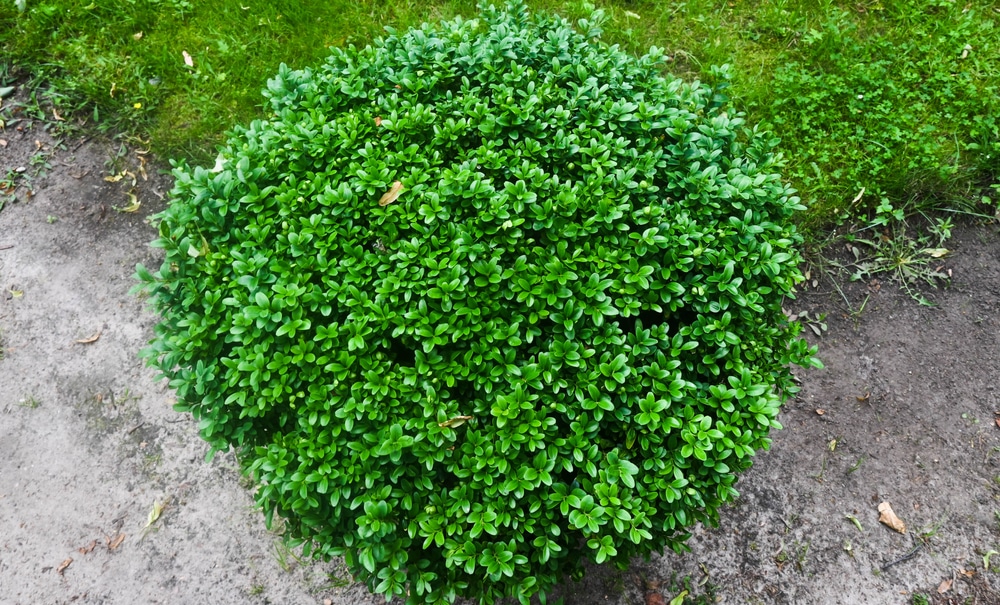
Specifications:
- Height: 4 Feet
- Breadth: 3 Feet
- Hardiness Zones: 5, 6, 7, 8
- Exposure: Full Sun, Partial Sun
- Color: Light Green
Green Gem
Green Gems have small, lush mounds of emerald foliage during the warmer months. There will be some bronzing that occurs during the winter months.
This slow-growing hybrid has a round shape and may be used in very different ways of design.
A perfect design idea for the Green Gem is planting the shrubs en masse and trimming their round shapes to give texture and depth to a large area of your garden. You may also find these to be very useful in hedgerows or borders of your garden. These types of boxwood is extremely cold weather hardy.

Specifications:
- Height: 4 Feet
- Breadth: 3 Feet
- Hardiness Zones: 4, 5, 6, 7, 8, 9
- Exposure: Full Sun, Partial Sun
- Color: Green


Beautiful!